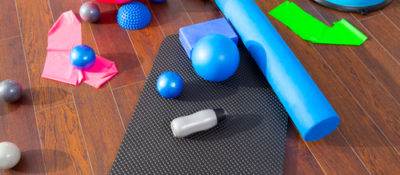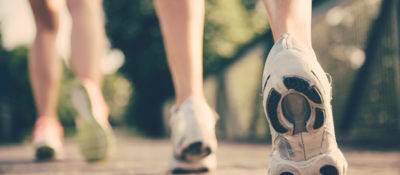Joanne Wong is a Exercise Therapist at Sitka Physio and Wellness that specializes in Scolio-Pilates. Joanne is also a Certified TRE Facilitator and Bellies Inc. Trainer.
What is a Scoliotic Spine?
If I were to label our spine with a personality,I would call it the strong, silent type. Strongenough to protect mushy organs from behind and quietly supple to provide us with our three planes of motion: forward and back, side to side and rotation. It is strong enough to house the vital spinal cord while quietly absorbing shock with every step we take. This is due to the brilliant design of the gel-filled discs placed between the bony vertebrae that are filled with spongy bone. In addition, we have the help of the four curves that move front to back, that are visible from the side profile.
In fact, our spinal design is unique to us in that we have a curve in the lumbar earning us the title of being the only bipedal mammals roaming the earth. Chimpanzees can only walk upright for short periods if they throw their long, strong arms up in the air to compensate for the missing lumbar curvature. This becomes tiring so it’s not long before they go back to knuckle-walking.
In a scoliosis, not only are there curves that move front to back, but also side to side and rotating due to the bony bits that get in the way, such as processes, facets and ribs. It is as 3-dimensional as a spiral staircase. This is how it’s been described by Karena Thek, creator of Scolio-Pilates. But unlike the staircase that spirals in one direction, the scoliotic spine will curve in one direction and then another in the attempt to keep the head over the feet, with the nose and toes facing in the same direction. There can be anywhere from 3 to 6 curves, possibly more.
Options Available for Scoliotic Spine
Generally speaking, the medical field offers three options for the scoliotic spine: observation, bracing and surgery. This would be dependent on the nature and depth of the curves. Although exercise is also suggested by some medical professionals, it feels like a broad stroke piece of advice given to many, scoliosis or not. Yes, exercising in some way is better than not exercising at all. But what about giving exercises that are specific to that spine? Where bits of the body are considered in relation to other bits, or where right and left has different strengths and weaknesses and where directly above and below requires individual access in order to fully benefit. In this manner, it may not be so hard to believe that one can stop the possible progression of a scoliosis and not uncommon, to decrease the curvatures with practice overtime. After all, we are talking about a body where there are muscles overly engaged in some parts and vice versa. This can be negatively impacted in regular exercises of repetitive motion and when symmetrical engagement is expected.
In breathing exercises alone, one can begin to slow or stop the curves from deepening into the pull of gravity. How? Think of our breathing muscle, the diaphragm, that is shaped like a jellyfish. It divides our chest cavity from our abdominal cavity. Just like a jellyfish, we would like it to move in its entirety. But with one example of a scoliosis, if the right ribcage protrudes from behind, (known as the convexity), then the left ribcage will draw in towards the body, (known as the concavity). The opposite is then true at the front. The right back ribs that are convex, pulls the right front ribs into a concavity. Because the left back is concave, this pushes the left front to become convex. I know, I’m almost there with my point. Where the right back and left front is convex is where the lungs are most free to move. Therefore the approximately 20,000 breaths-a-day that we take could potentially be deepening the scoliosis. (Imagine the direction the jellyfish would take propelling itself through water with only parts of it expanding). Why not focus our breath into parts of the diaphragm that are not moving? The ribs and surrounding muscles of the concave, compressed areas would functionbetter with practice. These are the teachings of Scolio-Pilates.
What is Scolio-Pilates?
Karena Thek has a scoliosis herself and has created Scolio-Pilates from her study of breath techniques, fascia training and the study of previous scoliosis management techniques from the Ancient Greeks (500 BC) to the Schroth Method (20th century). It was during the 20th century when Katharina Schroth, who suffered from a scoliosis, first addressed strengthening while in an improved alignment. The Schroth Clinic in Germany is in full operation today forthose that seek relief through exercise. In Scolio-Pilates, Scolio-Wedges made of foam are used to bring the spine into a better neutral position. Initial lengthening to de-compress the torso at the start of each strengthening exercise is practiced in various positions. This method has been used successfully to reduce or eliminate pain. According to the studies, (see references), curves can be reduced by up to 32%! Whether one practices with a spinal fusion, a rod surgically attached to the spine, pre or post surgery, bracing or a scoliosis without intervention, almost all have reported some level of improvement.
There are 15 Authorized Scolio-Pilates Practitioners world-wide. Karena’s vision is for all of us to gather data on standardized forms to be tabulated and brought to the attention of the medical professionals and the scoliosis community as a whole. The purpose is to bring awareness to the additional scoliosis management option beyond observation, bracing and
surgery.
Corrective Exercises for Scoliosis…a viable fourth option.
References:
- Brooks WJ, Krupinski EA, Hawes MC. “Reversal of childhood idiopathic scoliosis in an adult, without surgery: a case report and literature review.” Scoliosis (2009) Dec 15;4:27.
- Barczyk K, Zawadzka D, Hawrylak A, Bochenska A, Skolimowska B, Malachowska-Sobieska M. “The influence of correctiveexercises in a water environment on the shape of antero-posterior curves of the spine and on the functional status of thelocomotor system in children with scoliosis.” Ortop Traumatol Rehabil. (2009) May-Jun;11(3):209-21.
- Weiss HR. “Influence of an in-patient exercise program on scoliotic curve.” Italian Journal of Orthopedic Traumatology,(1992);18(3):395-406.
- Otman S, Kose N, Yakut Y. “The efficacy of Schroth’s 3-dimensional exercise therapy in the treatment of adolescent idiopathic scoliosis in Turkey.” Saudi Medical Journal (9/2005), vol. 26(9):1429-35



